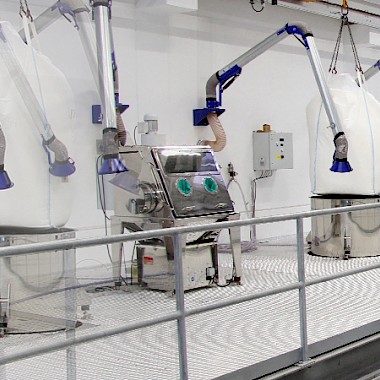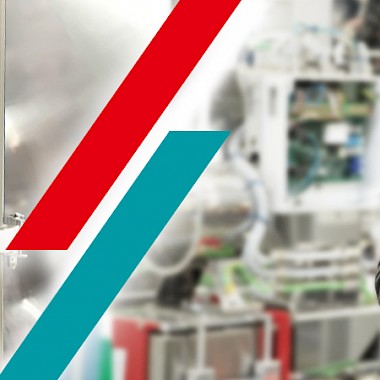Expert Spotlight: Jürgen Knez, Head of Mechanical Development
Product Development – Always in Motion
"Standing still is a step backwards, to cease striving is spiritual death." This time-tested wisdom has never been more relevant than in today’s high-speed, high-stakes world of product innovation. At Kubota Brabender Technologie, progress isn’t a buzzword. It’s the core of the company’s mission: to deliver solutions that don’t just meet the current needs of its customers, but anticipate the ones they haven’t thought of yet.
For Jürgen Knez, Head of Mechanical Development, that mission is a daily driver. "We are constantly working on ways to become even better at exceeding our customers' requirements," explains Knez. "Of course, new products play a central role here. Improvements to existing devices are also extremely important, however. Even a detail that may not seem significant – such as a change of materials – can be important and achieve a substantial advantage. This is also part of our job as product developers."
Expertise for the Products of Tomorrow
At Kubota Brabender Technologie, product development is a collaborative effort that crosses disciplines and borders. Chief Development Officer (CDO) Nobuyuki Ozawa coordinates and manages the three departments Mechanical, Electronic, and Software Development, connecting them with the development departments in Japan. Under his leadership, experienced developers from various specialist areas bring a range of skills and perspectives to every project. With over 25 years in the field, Knez heads the mechanical team with the support of colleague Henning Reger. Coordinated cooperation between the three departments as well as with the entire company helps guarantee that the developed product is not only functional, but also manufacturable and appealing to customers and the market.
Cultural Exchange
"Cooperation between Germany and Japan plays an important role in product development," Knez reports. "We have a total of four Technical Centers in both countries – two in Japan and two in Germany. For product localization, we use a Technical Center in Japan that offers larger premises and more manpower." A significant advantage for the German developers is the Japanese know-how they can draw on. "Our Japanese colleagues are matchless when it comes to software development, for example. We also have access to the Kubota Group's expertise – an invaluable benefit in the field of AI, among other things. Kubota has already developed fully autonomous agricultural equipment, and their comprehensive knowledge of AI is available to us."
Cultural diversity also fuels creativity. "I keep noticing that Japanese colleagues have completely different ideas on how to approach things. An alternative perspective can be very enlightening. Sometimes you are just too caught up in your habits to come up with certain solutions." To strengthen this exchange, a Japanese colleague has joined the Duisburg team – a reinforcement that Knez has been looking forward to.
Adapting Japanese Tech for the German Market
Product innovation doesn’t always mean starting from scratch – sometimes, the challenge is in translating an established concept for a new market. For example, Kubota Brabender Technologie’s gravimetric NX feeders were originally built for the Asian market. With some smart reengineering – namely, new seals, motors, and load cells – they now meet European and North American standards while maintaining the core strengths of their proven Japanese design. The result is a line of feeders that provide excellent material flow and bridge prevention for poor-flowing and sticky ingredients, expanding the company’s offering for customers across industries.
Inspiration From Many Sources
Each new product starts as an idea or a spark. "Where the initial impulse comes from varies," says Knez. "We receive ideas from the entire company, as well as from customers." Promising ideas turn into projects, and the process of working out and evaluating possible solutions begins.
No matter the source, the path from concept to market runs through a structured, seven-phase development process. Everyone involved - from engineers to project managers - works from a centralized platform for transparency, accountability, and momentum.
Not every project involves a large-scale, lengthy product development – some impactful innovations are small tweaks that solve a specific customer problem. Consider, for example, a case where a customer needed a better way to disassemble agitator blades for cleaning. The standard design didn’t work well with their product. The fix? A simple mechanical locking feature that made blade removal easier and safer. Problem solved, customer happy.
Putting Developments Through Their Paces
No prototype is market-ready out of the gate. At Kubota Brabender Technologie, new devices go through rigorous internal testing as well as numerous optimizations and adjustments.
We start out by subjecting prototypes to uncompromising tests in our Technical Centers. Once we have developed the prototype to the point where we can no longer find any errors in trial operation, we send it to long-term testing and to industrial partners, where it is tested in actual production. The feedback from customers who work with us at this stage is enormously valuable.Jürgen Knez, Head of Mechanical Development
This process recently paid off in a recent pharmaceutical project. During early testing, the team detected tiny traces of metal abrasion - an absolute no go in pharma production. The fix? Engineers swapped out the metal base plate for a high-grade plastic one. Another issue: the protective hood was awkward to remove. The solution here was a redesigned locking system that allows easy vertical removal. Simple changes, big impact.
New Generation with Modular Design
The future is modular at Kubota Brabender Technologie: The devices currently undergoing testing in the pharmaceutical industry are pioneers of a new feeder generation. "The idea stems from the pharmaceutical feeder DDSR 20 EC, which we launched as a patented modular design in 2022," says Knez. "Since then, I've been thinking – can't we make a design like this a standard option?"
Yes, they can. By cleverly combining standard and newly developed components, the Kubota Brabender Technologie developers have designed a modular architecture that renders equipment easier to clean, adapt, and maintain. Users can separate the process section from the drive in seconds. Need to switch products? Just swap in a new module. Even with a product change, production can theoretically continue within 30 seconds – minimal downtime, maximum flexibility.
This new product generation is undergoing final validations and is on track to soon enter the penultimate phase – preparing for series production.
Put to the Test: Plastic Feeding Screws for the Battery Industry
One particularly exciting development is intended for the battery industry, among others. Kubota Brabender Technologie is currently testing plastic feeding screws with stainless steel bayonet mounts, designed to stand up to abrasive materials. After multiple design iterations and manufacturing trials, a promising prototype has emerged. In long-term testing, developers are now looking into which material achieves the best results for specific applications, and subjecting the screw to rigorous tests with various abrasive products.
Tools of the Trade
At the Technical Center in Duisburg, a state-of-the-art, large-volume 3D resin printer supports developers in the production of prototypes. Thanks to its extreme accuracy, the device can also produce dimensionally accurate parts with flawless surface quality. "With this printer, we are no longer dependent on ordering parts," says Knez. "The required parts are available in one to two days, which speeds processes up considerably."
Looking Back to Look Ahead
Throughout most of human history, technology progressed at an incremental and often glacial pace. Civilizations used the same tools, the same methods, often for centuries. That changed with the industrial revolution, and even more dramatically with the rise of increased literacy, globalization, and now artificial intelligence – all compounding the need for modularity and a circular economy. Today, the pace of change is explosive and relentless.
And yet, across all eras and time periods, one constant remains: innovation begins with a question. What if there was another way? What if life could be easier, safer, or more sustainable? From the first stone tools to the latest machine-learning algorithm, progress always starts with the same instinct: to imagine a better world and then to set out and make it real.
When it comes to the developers at Kubota Brabender Technologie, asking these questions isn’t just a step in the process. It is the guiding force behind everything they do. As Knez puts it: "At the heart of every breakthrough is a simple question: what else is possible? That's what drives real innovation."


